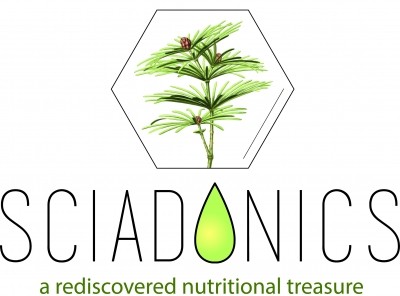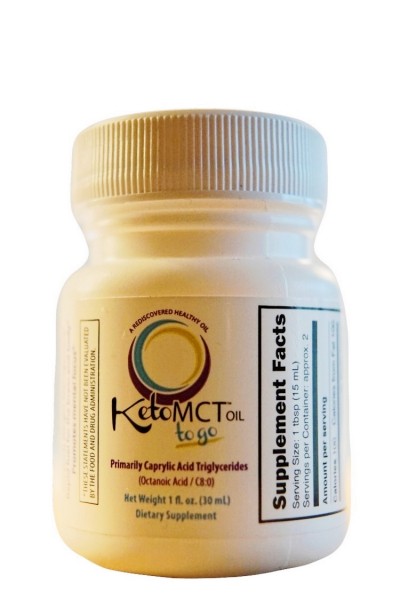Sciadonic acid takes topical route as first step in dietary ingredient development

Sciadonic acid (SCA) is an unusual non-methylene-interrupted fatty acid that can be found in the seeds of a number of gymnosperms, an ancient family of plants whose seeds are unprotected by an ovary or a fruit. Examples include conifers, cycads and ginkgo.
Lipid chemist Alvin Berger, PhD, is CEO of the company, called Sciadonics, Inc., that is developing the ingredient. Berger said story of the sciadonic acid, or SCA, is another one of those overnight debuts that took decades. Berger did much of his PhD work at the University of California-Davis on the acid, and came to appreciate its potential anti-inflammatory properties. But SCA was in the wrong place at the wrong time, Berger said, because his work coincided with the rise of fish oil.
Fish oil ascendant
“I had all this background in the late 80s and through the 90s working on SCA. I was watching the lipid space evolve around me and at that time it was all fish oil, fish oil, fish oil. When I first started developing a product everyone said there would be no market for it,” Berger told NutraIngredients-USA.
So Berger moved on to other things, including stints with Nestlé and Cargill and work on a different source of omega-3s from herring roe. He said he saw that space mature, and start to become commoditized, with suppliers moving to new forms of oil or higher concentrations in an effort to differentiate themselves and to stay out of the trap of having to compete solely on cost.
Hole in the diet
While doing his initial work along ethnobotanical lines on SCA, Berger said he came to appreciate the fatty acid’s missing place at the dietary table. The seeds of gymnosperms are still consumed as part of the diet in some societies. Juniper berries are consumed as a minor part of the diet in the Scandinavian countries, and pine nuts have been a part of the diet in Mediterranean countries and were a staple in the American Southwest for centuries.
But Berger said in the past these seeds were ubiquitous and were consumed in far greater quantities, but as organized agriculture, and in particular industrial agriculture, started to take hold, the consumption of these seeds started to fall by the wayside. Other more easily cultivated and harvested crops started to come to the fore. And Berger speculated that small mammals such as squirrels used to be consumed with some regularity by hunter-gatherer-type societies, and these small mammals had concentrated levels of SCA in their tissues from consumption of those same seeds.
“In places where these seeds have been consumed, the oils of these seeds have been known for their health properties,” Berger said.
Berger developed sources for sciadonic acid (which is now branded as Delta-5, a moniker derived from the acid’s double bond structure) from the seeds of Nageia nagi, a tree species that is a member of the broad group of Southern Hemisphere conifers. The tree is native to east and southeast Asia. The seeds are wildcrafted, and Berger said a big part of the challenge of developing the ingredient has been securing a reliable supply of raw material of the requisite specifications, a hurdle that he said has now been cleared.
Topical product as a first step
Among the ingredient’s benefits are anti inflammatory effects on the skin, with a lessening of wrinkles and redness associated with oxidative damage in the epidermis, Berger said. Because of the lower regulatory barrier to entry in topical products, Berger and his associates have formed a subsidiary, called sciaessentials.com to market a topical product direct to consumers.
The door could be open to a beauty-from-within ingestible product, too, Berger said, as well as dietary supplements with a broader inflammation support positioning. The challenge has been the risk tolerance of potential manufacturing partners. While Berger said his long study of the ingredient leaves him in no doubt as to its safety and suitability as a dietary ingredient, larger companies want a more firm certification of that before moving forward.
“We have been discussing a plan to go forward with an oil-based supplement,” Berger said. “But the GRAS regulatory requirement has been a bottleneck.”
Berger said there is a GRAS dossier out there for SCA at a low dose, which could provide a toehold in the dietary supplement market while a higher dose dossier is prepared. But the data that must be assembled to complete such a dossier comes at a cost, which is why the company is still seeking a partner to help fund the effort, he said.
“We could gain some traction and then move to the higher dose. The first step would be to fund a dose response study. We anticipate the optimal dose would be between 500 mg and 1 gram,” he said.
Still focused on supplements
Sometimes the development path can fork in a wood, so to speak, and some ingredients take a road less traveled and disappear from view.
For example, recently a company that for a number of years has been developing algae ingredients for dietary supplements received an offer that seemed too good to pass up to sell its entire biomass production for aquaculture feed. It’s an open question now, given that contract, whether the planned dietary ingredients will ever come to market.
But Berger said while the intent is to make Sciaessentials a success in its own right, the dietary ingredient/dietary supplement goal is still in view.
“In the skin care realm there is an awful lot of fluff. This ingredient is based on 30 years of foundational research. We have data on SCA’s anti-inflammatory potential in a mouse model and in human skin cell lines. We found the neat oil worked very rapidly and potently,” Berger said.
“But for dietary ingredients, there hasn’t been anything new in the fatty acid market since the advent of CLA (conjugated linolenic acid). People have gotten past their trepidation in the late ‘80s and in the ‘90s that fats are bad for us. Fats as a dietary ingredient are on trend, and we know that SCA is bioavailable and bioactive when consumed orally."
















